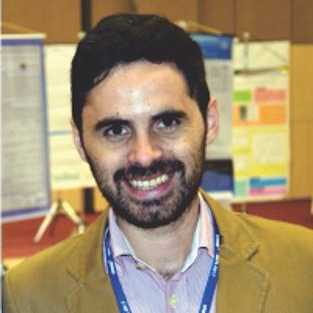A Themed Issue in Honor of Professor Robin D. Rogers - "A Scientific Journey within Green Chemistry"
A special issue of Molecules (ISSN 1420-3049). This special issue belongs to the section "Molecular Liquids".
Deadline for manuscript submissions: closed (31 May 2022) | Viewed by 16304
Special Issue Editors
Interests: separation processes; ionic liquids; deep eutectic solvents; (bio)pharmaceuticals; biomarkers; purification; stability
Special Issues, Collections and Topics in MDPI journals
Interests: ionic liquids; sustainability; separations; biomass; unconventional oil
Special Issues, Collections and Topics in MDPI journals
Interests: Ionic liquids; bioprocessing; proteins; enzymes; stability; downstream
Special Issues, Collections and Topics in MDPI journals
Interests: ionic liquids; green catalysis; natural product separation
Special Issue Information
Dear Colleagues,
In recent decades, we have witnessed a change in the meaning of “chemistry”. In the beginning, terms such as organic, inorganic, and analytical were the ones most commonly used to subdivide this fundamental discipline. However, during the 1990s, awareness regarding the environmental impacts of traditional chemistry changed the way we see it and apply it. The term “green chemistry”, defined as the “design of chemical products and processes to reduce or eliminate the use and generation of hazardous substances” (by Paul T. Anastas), arose as a landmark in chemistry. Since then, a “greener wave” has grown in the Scientific Community, fully transforming this discipline, with the protection of the environment and people, as well as the enhancement of competitiveness of chemical industries in ecologic, economic, and sustainable aspects, appearing as critical challenges.
The worldwide scientific community working in chemistry is devoting strong efforts to fitting within green chemistry and overcoming these challenges. Among world-renowned researchers, Prof. Dr. Robin D. Rogers is one of the pioneers in “greening” chemistry. During his outstanding scientific career, he has brought sustainability into diverse chemistry-related applications. Among his remarkable research contributions, one notable achievement is the use of ionic liquids and green chemistry for developing sustainable chemical technologies in the fields of materials, separations, energy, and medicine. He is an inspiration for younger researchers, always supporting and challenging them to go deeper and contribute toward sustainable development in benefit of society.
We believe that this is the right moment to honor his remarkable “Scientific Journey within Green Chemistry”, as well as to acknowledge his collaboration and strong support in developing our scientific careers. Therefore, it is our great pleasure to invite all of you to submit your research or review manuscript to this Special Issue. This Special Issue aims to cover research in all fields that Prof. Dr. Robin D. Rogers has been working in, with special focus on “green chemistry”.
Prof. Dr. Mara G. Freire
Dr. Paula Berton
Prof. Dr. Jorge F. B. Pereira
Dr. Hui Wang
Dr. Xingmei Lu
Guest Editors
Manuscript Submission Information
Manuscripts should be submitted online at www.mdpi.com by registering and logging in to this website. Once you are registered, click here to go to the submission form. Manuscripts can be submitted until the deadline. All submissions that pass pre-check are peer-reviewed. Accepted papers will be published continuously in the journal (as soon as accepted) and will be listed together on the special issue website. Research articles, review articles as well as short communications are invited. For planned papers, a title and short abstract (about 100 words) can be sent to the Editorial Office for announcement on this website.
Submitted manuscripts should not have been published previously, nor be under consideration for publication elsewhere (except conference proceedings papers). All manuscripts are thoroughly refereed through a single-blind peer-review process. A guide for authors and other relevant information for submission of manuscripts is available on the Instructions for Authors page. Molecules is an international peer-reviewed open access semimonthly journal published by MDPI.
Please visit the Instructions for Authors page before submitting a manuscript. The Article Processing Charge (APC) for publication in this open access journal is 2700 CHF (Swiss Francs). Submitted papers should be well formatted and use good English. Authors may use MDPI's English editing service prior to publication or during author revisions.
Keywords
- green chemistry
- ionic liquids
- materials
- energy
- separations
- medicine
- sustainability










